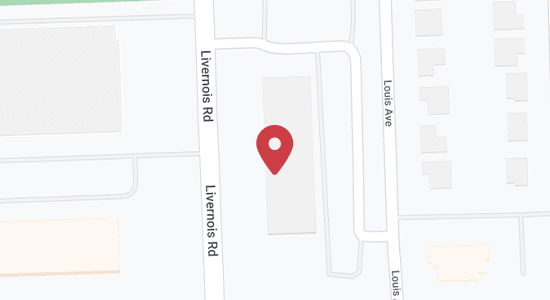- Free Consultation - Call 24/7: 248-515-6583 Tap Here to Call Us
Michigan Lifetime Electronic Monitoring: All You Need to Know
Michigan Lifetime Electronic Monitoring: All You Need to Know
Michigan’s lifetime electronic monitoring system is meant to provide community supervision staff with additional tools to more intensely supervise offenders. The department also provides this monitoring service for some district and probate courts, sheriffs’ departments, and juvenile offenders.
Michigan Lifetime Electronic Monitoring

In l986, the Curfew Monitoring Program (formerly known as Radio Frequency) was successfully steered for selected Washtenaw County probationers, but by the end of 1987 it was being used on a statewide basis. It allows for the monitoring and enforcement of curfews, along with other conditions of community supervision.
Offenders supervised using electronic monitoring devices are managed more closely than other offenders within the community. The use of electronic monitoring is sometimes used to divert offenders from placement in local county jails, along with acting as an additional deterrent to parolees and probationers being managed in the community.
This technology has become increasingly popular as the movement to reduce mass incarceration gains momentum. It is touted as a way of bringing down prison populations, while still keeping people under the watchful eye of the state.
With that said, you need to understand electronic monitoring for what it really is, which is incarceration by another name. In other words, it is a form of incarceration which has largely arisen without scrutiny or regulation. As a person under lifetime electronic monitoring, you can simply be described as not having to fight for neither the telephone nor the shower — but you are still in jail.

Areas Covered by Lifetime Electronic Monitoring
Electronic monitoring has attained more strength in controlling some major criminal conducts that are found to be problematic on a societal level, especially when it comes to what is criminal sexual conduct and alcoholism.
- Alcoholism
In 2004, the monitoring program for alcohol consumption expanded with the introduction of the S.C.R.A.M. (Secure Continuous Remote Alcohol Monitoring) alcohol monitoring device.
This device uses fuel cell technology and monitors for alcohol consumption 24 hours per day, seven days every week. Each sample it takes is tested and the readings are stored in the bracelet. Those readings are then transmitted to a host computer, through the use of a modem, at a predetermined time.
- Criminal Sexual Conduct
In Michigan, once you are convicted of certain criminal sexual conduct charges (see CSC degrees), you must have a tether device attached to you for the rest of your life.
Legislation, which became effective in August of 2006, requires lifetime electronic monitoring of specified sex offenders. Sex offenders sentenced to probation and/or jail time, for the offenses defined in the statute, with a special condition for lifetime electronic monitoring, shall also be subject to GPS supervision.
Those sex offenders sentenced to the Michigan Department of Corrections shall also be included in lifetime electronic monitoring. Criminal sexual conduct 1st degree statutes state, in addition to any other penalty imposed, that the Michigan Supreme court shall sentence sex offenders to lifetime electronic monitoring.
Criminal sexual conduct 2nd degree statutes state that the sentencing court shall sentence sex offenders to lifetime electronic monitoring if the defendant that committed the illegal sexual contact was at least 17 years of age and the alleged victim was less than 13.
Why Lifetime Electronic Monitoring is Used
Lifetime electronic monitoring qualifies as an intelligent, targeted strategy of using certain types of technologies to continuously monitor certain types of offenders’, such as specified sex offenders, progress and making adjustments where needed.
Many offenders have endured the ‘horror’ of waiting for trial and, following their conviction, potentially being locked up in an actual prison. With that being said, most would pick electronic monitoring several times over being locked up, if possible.
In some jurisdictions, electronic monitoring is being used as a treatment tool. Other areas are using it simply to deal with overcrowding issues and the need to get people out of prison or jail. So, it varies from area to area and jurisdiction to jurisdiction.
When it comes to juveniles, judges typically do not want to keep them in custody, so electronic monitoring is mostly an alternative to incarceration. Most states, in fact, have laws that say that youth offenders have to be in the least restrictive custody level allowable for whatever they are charged with. This is where electronic monitoring sometimes provides just the needed middle ground.
There has been clear data to show that the electronic monitors are effective for youthful offenders because they provide structure and rules that juveniles must follow to remain in the community. It has gone in two different directions.
As a whole, we need to use lifetime electronic monitoring at the state level to divert folks who do not need to be in jail, and use it at the back end for things like compassionate release of elderly offenders who can very easily be monitored at home for a period of time.
Rationale for Lifetime Electronic Monitoring
Even though many agree that electronic monitoring is a promising tool for reducing recidivism and controlling corrections costs, questions remain about its adequacy as an alternative to incarceration.
Lifetime electronic monitoring is meant to hold defendants convicted of serious crimes, such as first degree criminal sexual conduct, accountable for their actions — thus, their basic movements and activities are monitored every single day.
It is also meant to be a deterrent for convicted felons, i.e. sex offenders registerd on the sex offender registry, from reoffending, absconding, or violating the rules of their supervision. The goals and objectives here are to align with an overall strategy of conducting community supervision with the hopes of changing sex offenders’ behaviors so they will not commit new crimes.
Public Perception of Lifetime Electronic Monitoring
Overall, the response has been pretty positive when it comes to the purposes of what lifetime electronic monitoring is used for and what it is out to achieve. There also has been, however, a lot of public scrutiny when it comes to lifetime electronic monitoring.
For starters, people have been critical about how easy the lifetime electronic monitoring bracelets are to cut off. Though this on the surface may be understandable, it ultimately is not fair to have the bracelets permanently fixed in case there is an accident or an emergency where they would need to come off.
For example, if the offender breaks his leg and it is swelling, you can not have a band there that is irremovable. This could be deemed as a life-threatening condition at the time, necessitating an operation, which would require the lifetime electronic monitoring device needing to be removed.
The way it works now is, after an operation in intensive care is complete, a department officer would already be there to reattach the lifetime electronic monitoring device. Though this may seem barbaric and embarrassing, to say the least, this is how the system currently works.
There is also the real problem of these devices malfunctioning and sending false reports that the offender has, in some way, tampered with the device. This causes hassles for you, as the person being monitored, because your supervising agency freaks out when they get a notification. This, ofcourse, still shows some imperfections of the device.
For heightened effectiveness, the vendors that supply these devices are improving these devices all the time in an effort to severely reduce these errors, if not one day completely eliminate them all together. They are also getting smarter about battery life and power saving methods, so the devices themselves are getting smaller.
Facing Criminal Sexual Conduct Charges? Hire Nicole Blank Becker!
If you or someone you know is facing criminal sexual conduct allegations of any kind, you must contact Nicole Blank Becker of Blank Law, PC immediately! Saying nothing to the police until you have an attorney present will give you a much better chance of achieving the results for your case.











